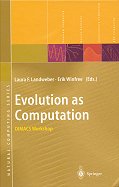This open access book provides a unique and state-of-the-art view
on DNA nanotechnology with an eye toward future developments.
Intended as a tribute to Nadrian C. Seeman,
who founded the field of DNA nanotechnology,
the content is an exciting mixture of technical and non-technical material,
reviews, tutorials, perspectives, new findings, and open questions.
The book aims to inspire current researchers to sit back
and think about the big picture,
while also enticing new researchers to enter the field.
Most of all, the book captures voices from a unique moment in time:
40 years after the publication of the first paper that envisioned DNA nanotechnology.
From this vantage point, what are the untold stories, the unspoken concerns,
the underlying fundamental issues, the overlooked opportunities,
and the unifying grand challenges?
What will help us see more clearly, see more creatively, or see farther?
What is transpiring right now that could pave the way for the future?
To address these questions, leading researchers have contributed 22 chapters,
grouped into five sections: perspectives, chemistry and physics, structures,
biochemical circuits, and spatial systems.
This book will be an important reference point in the field of DNA nanotechnology,
both for established researchers looking to take stock of the field and its future,
and for newcomers such as graduate students and researchers in other fields
who are beginning to appreciate the power and applicability of its methods.

